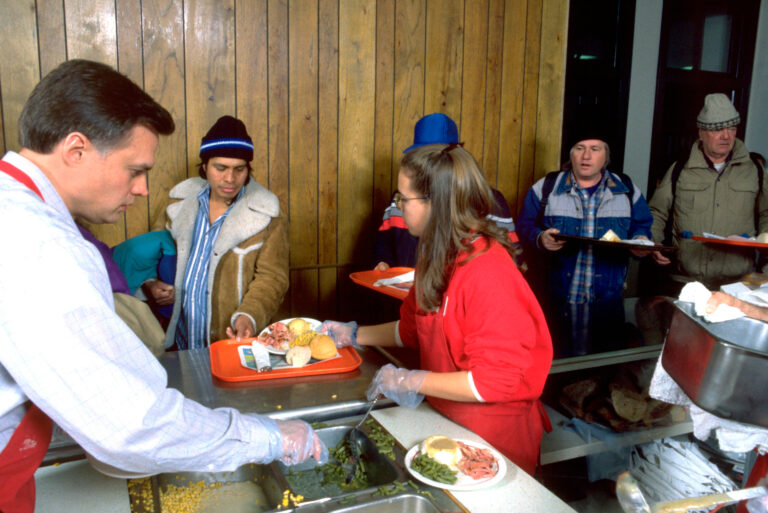I recently came into possession of dozens of conservative journals, magazines, and newsletters dating back to the early 1970s. They were a kind gift from an eclectic intellectual and humanist named George Cordahi who for decades subscribed to a wide range of intellectual and political publications.
Leafing through the dozens of old copies of National Review, The American Spectator, Policy Review, and others, I’m struck by the extent to which the issues and challenges we’re facing today are rooted in the same human behaviours, impulses, and limitations that have bedeviled past generations. Plus ça change, plus c’est la même chose.
Reading these old issues provides a window into the consistency of human experience. The language and context might differ, but the topics and debates regularly reappear. These historic journals and magazines can therefore function like a literary museum to help us understand and confront contemporary issues with historical antecedents.
Poverty, technology, immigration, college radicalism, the role of faith in the public square, and a number of other familiar questions are just some of the issues that crop up repeatedly throughout the historic collection. The degree of overlap and relevance to contemporary debates is striking – even for a conservative predisposed to an anti-presentism.
One debate from the October 19, 1984 issue of National Review is particularly relevant for our current political moment. It’s between Joseph F. Johnston Jr. (former president of the Philadelphia Society) and Richard Viguerie (long-time conservative activist) on the merits of populism. Their debate may be nearly three-and-a-half decades old, but it could easily run in NRO today.
Johnston argues that populism is a “dead end” for conservatism because it’s “founded on economic fallacies, simplistic remedies, and a conspiracy theory of history.” He characterizes it as mostly a political impulse of the Left consumed by anti-market and anti-intellectual tendencies. And he warns that “populism is an unruly horse that always dominates its riders.”
Johnston argues instead for “genuine leadership” that resists simple solutions or bad yet popular ideas. He implores conservatives to “care more about their country than about being ‘popular.’”
The catalyst for the debate is Viguerie’s 1983 book The Establishment vs. the People: Is a New Populist Revolt on the Way?, which argues for the compatibility of populism and conservatism. He characterizes right-leaning “1980s-style populists” as anti-technocratic and “grounded in traditional values while sympathetic to libertarianism.”
But populism’s key feature, according to Viguerie, is less about ideas or policies and more about positioning and tactics. The oversized political influence of the “establishment” requires ordinary people – including farmers and workers – to “fight fire with fire.” Ideological consistency or prescribed policy outcomes are secondary to tone, process, and tribe. The wellspring of populist conservatism, in Viguerie’s view, is the Jeffersonian notion of identifying with the people.
It’s an interesting debate with obvious contemporary congruity. Many of the same arguments have been made about the current tensions between conservatism and populism, including here at C2C Journal. But the 35-year-old debate between Johnston and Viguerie reminds us of a few enduring truths about political conservatism and its relationship with populism.
The first, of course, is that conservatives can and should look to the past for insights and lessons. This is how we learn that human nature is unchanging – as contemporary American conservative thinker Yuval Levin says, “human nature has no history” – which is a key part of conservative anthropology. Human affairs remain rooted in the same imperfections, impulses, and aspirations that have inspired and bedevilled us throughout history. Populists on the Left imagine that perfectible humanity is just over the horizon, while populists on the Right dream nostalgically of bringing back utopias that never were. But conservatives rightly understand that the past is a useful input into how we think about issues and challenges in our own time.
The second insight from Johnston and Viguerie is that then, as now, the extent to which conservatism and populism involves a binary choice is exaggerated. Conservatism disconnected from real-life questions is mere dogmatism and populism untethered from conservatism is mere unprincipled license. The right balance is closer to Johnston’s side of the intellectual and political equation, but Viguerie’s perspective cannot be fully excluded.
Here’s where conservatives have work to do today. Building a bridge between conservatism and the interests, concerns, and aspirations of ordinary citizens – what Levin calls “applied conservatism” – is the sweet spot for the movement, particularly in the modern age. Senator Mike Lee from Utah has characterized it as “principled populism.” Some American policy wonks call it “reform conservatism.” The taxonomy is less important than the exercise and its outcomes. Incidentally this work began well before Donald Trump seized the political stage, and it must continue long after his final curtain call.
It’s about applying conservative insights and principles to new and emerging issues affecting ordinary citizens. It’s not always simple. It often involves trial and error. How should conservatives think about the environment? What’s the conservative answer to job dislocation? Where can conservatives contribute on homelessness or poverty? And so on. These are tough questions and often times they can’t be answered without breaking new policy ground. If it leads to criticism that conservatives are being unconservative, so be it. This criticism only holds if one accepts that conservatism is a finite set of policies or only speaks to a fixed set of issues. This is false though: conservatism is a framework – including a recognition of the role of incentives, individual responsibility, the dignity of work and self-actualization, the limits of state action, and the importance of civil society – that can be applied to any public question.
Conservatives in public life need to do the hard work of bringing expression to their ideas and insights in response to contemporary issues and challenges. It’s not enough to simply focus on topics where we have well-developed and broadly accepted policy prescriptions. But it’s equally inadequate for a political programme to be merely about affirming any and all public appetites no matter how unreasoned or impractical. It requires a modern and positive programme of policy reforms that applies conservative insights and principles to the issues facing ordinary people. One could call it a people-centric conservatism but, as most conservatives would rightly argue, that would be redundant.
Translating the old into the new is key for the conservative movement to bridge the divide with present-day populists. Mr. Cordahi’s rich collection reminds us that we’ve been doing just that for a long time. It’s time to get back to work.







